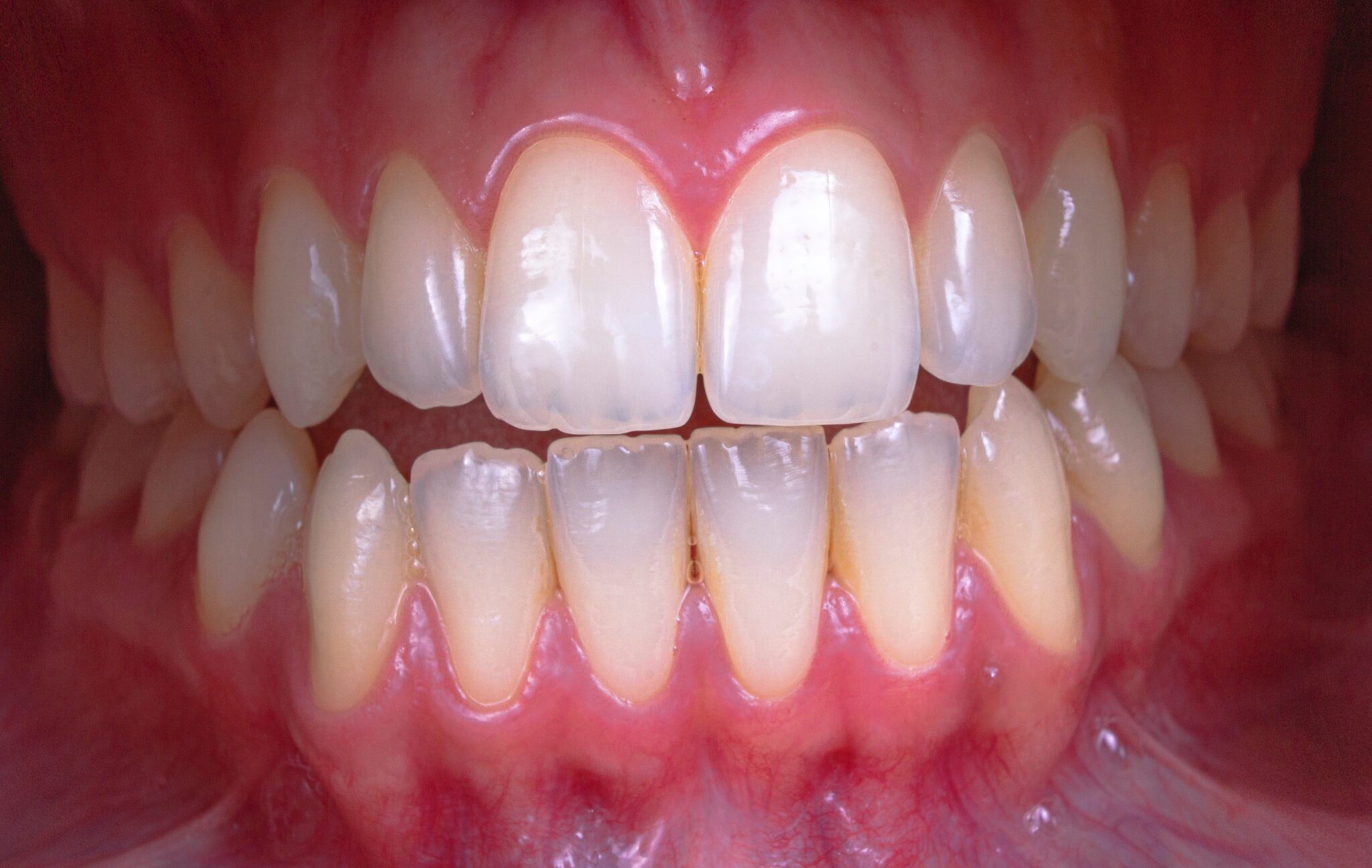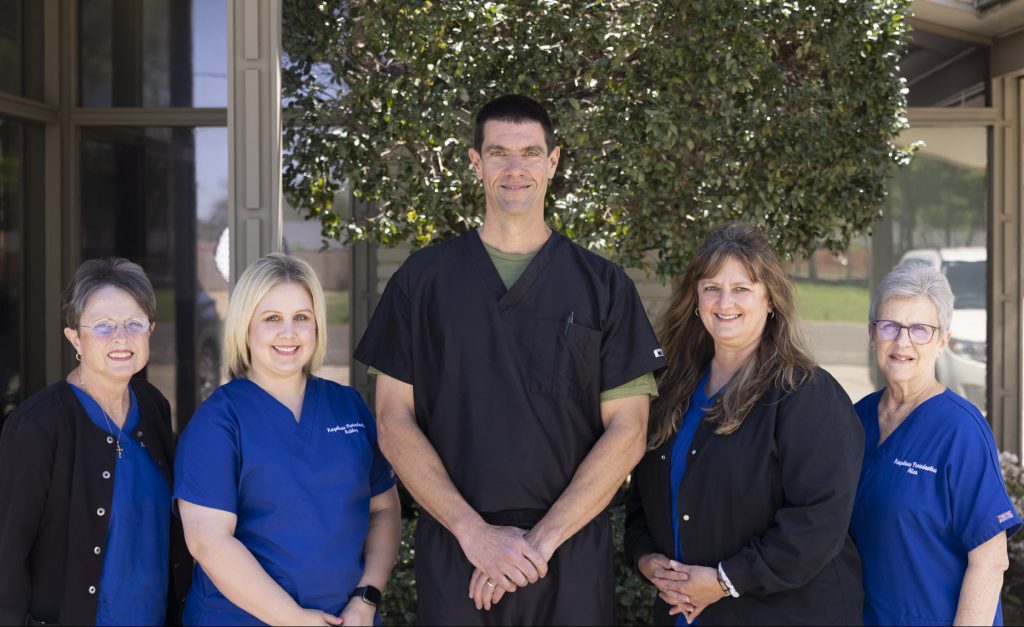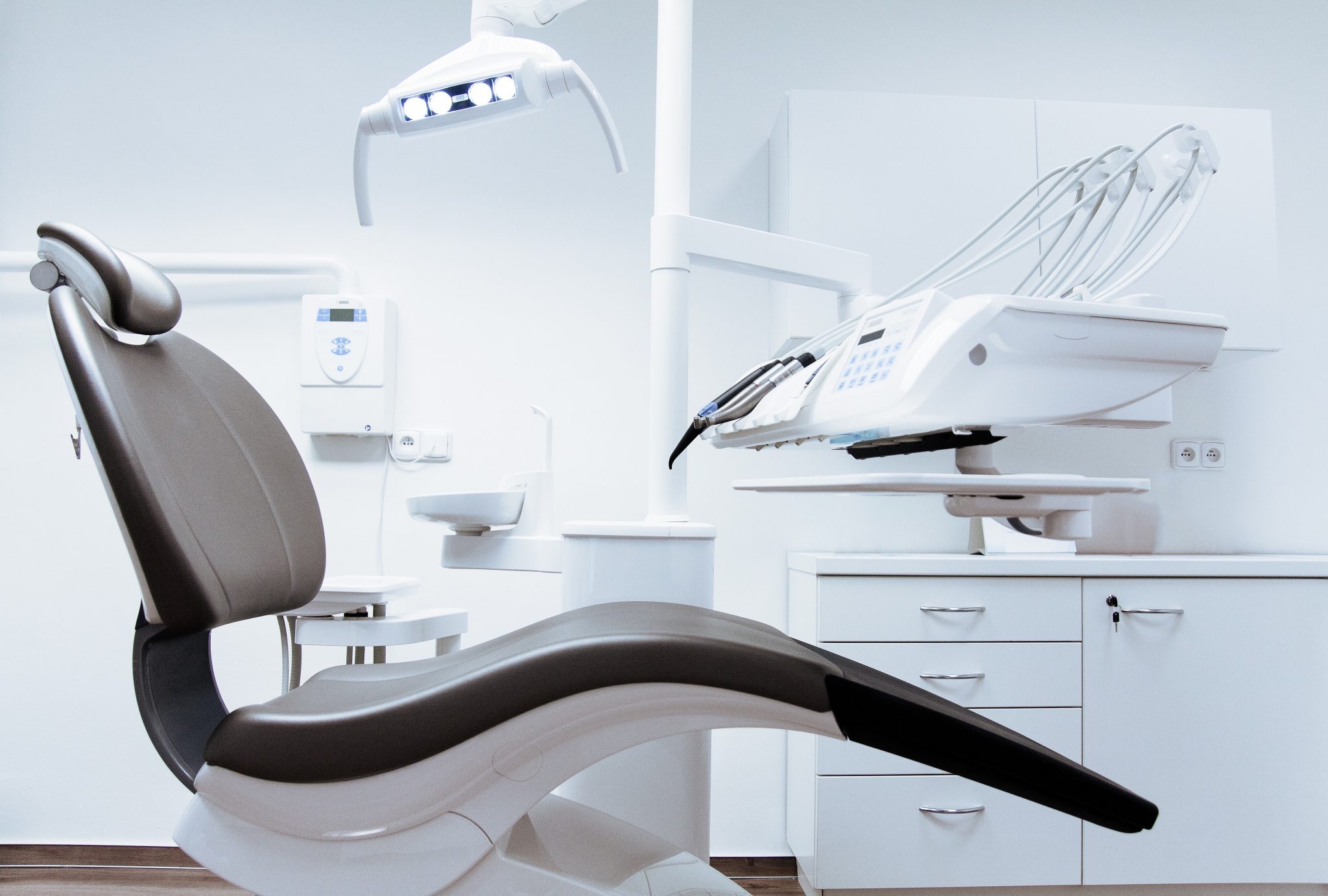Gum Graft Surgery: What Patients Need To Know



Gum Graft Surgery: What Patients Need To Know
Gum graft surgery, or gingival graft, is a dental procedure to treat thinning gums or gum recession. This condition can occur due to various factors such as aggressive tooth brushing, periodontal disease, or aging. When gum recession occurs, it may expose the roots of the teeth, making them more prone to decay and sensitivity, which can ultimately lead to tooth loss if left untreated. Gum graft surgery helps cover exposed tooth roots and add volume to the gum line, improving overall oral health.
There are different types of gum grafts, including free gingival grafts, connective tissue grafts, and pedicle grafts. The specific type of gum graft you may need will depend on the severity of your gum recession and the required treatment goals. In most cases, gum grafting can be performed by a periodontist, a dentist who specializes in the prevention, diagnosis, and treatment of gum diseases and oral inflammation.
The gum graft surgery is a relatively simple surgical procedure, with most patients experiencing minimal discomfort. Recovery times can vary, but generally, patients can expect to heal within one to two weeks. Proper post-surgery care is essential to ensure successful outcomes and minimize potential risks or complications.
Key Takeaways
- Gum graft surgery addresses gum recession, protecting exposed tooth roots and improving overall oral health.
- Several types of gum grafts are available, and the choice depends on individual needs and treatment goals.
- Recovery from gum graft surgery usually takes between one to two weeks, with proper post-surgery care being essential for success.
What Is a Gum Graft Surgery?
Gum graft surgery is a dental procedure to treat gum recession and improve oral health. The process involves the transfer of healthy gum tissue from one area of the mouth, typically the roof of the mouth, to the area where gum recession has occurred. The surgical site is usually the recipient site, where the graft tissue will be placed.
The gum graft procedure requires local anesthesia in most cases, but occasionally, general anesthesia can be used depending on the patient’s preference and the dentist’s recommendation. This ensures that the patient is comfortable and pain-free throughout the process.
There are several reasons someone may require gum graft surgery, including severe gum recession or inadequate gum tissue around dental implants. Gum recession can expose the roots of the teeth, increasing the risk of tooth sensitivity, decay, and even tooth loss. By reinforcing the gum line, gum grafting helps protect these exposed tooth roots and improves the longevity of dental implants.
During the gum grafting procedure, healthy tissue is taken from the roof of the mouth or another suitable area of the mouth and placed on the recipient site. This tissue, known as the graft, is carefully positioned and secured using sutures. Over time, the graft will integrate with the existing gum tissue, strengthening and providing support to the affected area.
The recovery period for gum graft surgery generally lasts one week to two weeks, but the healing process may take longer in certain situations. It is essential for patients to follow post-operative instructions provided by their dental professionals. This may involve avoiding hard, crunchy, or spicy foods, as well as carefully cleaning the area around the graft site to prevent infection.
Why You Might Need It
Gum graft surgery could become necessary for several reasons related to your oral health. One of the most common reasons for needing this procedure is the progression of periodontal disease. This condition causes the gum tissue to recede, exposing the tooth roots and increasing tooth sensitivity. Poor oral hygiene and aggressive brushing habits can also contribute to gum recession.
When gums recede, the risk of tooth loss and bone loss in the jaw increases. Additionally, exposed tooth roots are more susceptible to tooth decay and can cause tooth sensitivity due to the lack of protective gum tissue. In some cases, thin gums can also lead to further gum recession and tooth loss, which might necessitate gum graft surgery.
There are several factors that can contribute to gum recession, including:
- Genetics: Some individuals may have naturally thin gums, putting them at a higher risk for recession and needing gum graft surgery.
- Bruxism: Grinding or clenching your teeth can exert excessive force on the gum tissue, leading to recession and possible need for a graft.
- Malocclusion: Misaligned teeth can cause uneven pressure on the gums, resulting in gum recession in specific areas.
Gum graft surgery addresses these issues by covering the exposed tooth roots, reducing tooth sensitivity, and protecting the teeth and bone from further damage. By treating receding gums, the procedure helps to prevent further gum recession, tooth decay, and the risk of tooth loss.
Different Types of Gum Grafts
There are three main types of gum grafts that dentists perform to address gum recession and improve overall oral health. Each type of graft is suited for specific situations and depends on the patient’s needs. In this section, we will discuss connective-tissue grafts, free gingival grafts, and pedicle grafts.
Connective-Tissue Grafts
Connective-tissue grafts are the most common type of gum graft procedure. This procedure involves the removal of tissue from the roof of the patient’s mouth, specifically from the connective tissue beneath the top layer. The tissue is then carefully placed over the exposed tooth root and sutured into place. This method provides a natural appearance and is often used to treat multiple areas of gum recession in the patient’s mouth.
Free Gingival Grafts
Free gingival grafts differ from connective-tissue grafts in that they involve the removal of a small piece of tissue directly from the surface of the roof of the mouth. This graft is then attached to the area with gum recession. Free gingival grafts are typically used for patients who have thin gums and need additional tissue to prevent further recession or to cover exposed roots. The healing process for this type of graft can be slightly more uncomfortable due to the removal of tissue from the surface of the palate.
Pedicle Grafts
Pedicle grafts utilize the patient’s existing gum tissue near the area of gum recession. In this procedure, a flap of tissue, called a pedicle, is partially cut away and then pulled over the exposed tooth root. The tissue is then sutured into place, covering the exposed root and promoting healthy gum growth. This grafting procedure is best suited for patients who have an adequate amount of gum tissue near the area of recession, as it requires a sufficient amount of tissue to be effective.
The Procedure
Anesthesia
Before the gum graft surgery begins, your periodontist will administer local anesthesia to numb the affected area. This ensures that you are comfortable and free from any pain during the procedure. The local anesthetic used is typically very effective, and most patients report minimal discomfort during the surgery.
Grafting
The periodontist will then select a small piece of tissue to be used for the gum graft. This tissue is typically taken from the roof of your mouth or from nearby healthy gum tissue, depending on the specific needs of your case. The graft is then carefully placed over the exposed root surface, which will not just protect the tooth but also enables the healing process to take place.
It is important to note that there may be slight variations in the grafting techniques used, depending on individual factors and the extent of gum recession. Regardless, the primary goal of any gum graft procedure is to cover the exposed root surface with healthy tissue, promoting a stable and healthy gum line.
Recovery
The recovery time for gum graft surgery can vary, with the healing process generally taking between one to two weeks. In the first week following the procedure, patients should follow the post-operative instructions provided by their periodontist, which may include:
- Using a special mouth rinse to help control plaque
- Avoiding brushing and flossing in the treated area to allow time for healing
- Eating soft foods to prevent discomfort and irritation to the surgical site
As the healing process continues over the course of the first week, you can gradually return to your normal oral hygiene routine. If you experience any unusual pain or swelling, it is important to contact your periodontist for further evaluation.
Remember that successful gum graft surgery not only improves the appearance of your smile but also reduces your risk of severe gum disease and related complications. With proper care and oral hygiene, you can maintain the long-term health of your gums and teeth.
Post-Surgery Care
After a gum graft surgery, it is essential for patients to follow specific instructions to ensure proper healing and minimize complications. A crucial element of post-surgery care is pain management. Typically, a dentist or oral surgeon will prescribe pain medication to alleviate discomfort and swelling. Patients should take the prescribed medication as directed and notify their healthcare provider if the pain continues or worsens.
In addition to pain management, a soft diet is recommended during the healing process. Soft foods, such as soups, smoothies, yogurt, and mashed potatoes, require minimal chewing and promote faster healing while minimizing irritation to the surgical area. Patients should avoid eating hard, crunchy, or sticky foods that may get stuck in the graft site and cause discomfort. Additionally, it is advisable to refrain from hot or spicy foods during the initial days after surgery, as these may cause irritation or slow down the healing process.
Patients should also be cautious with temperature when consuming food and beverages. Cold foods and drinks can cause sensitivity and discomfort in the exposed tooth roots. To minimize this risk, it is best to consume room temperature or slightly warm foods and beverages.
Maintaining proper oral hygiene is crucial during the recovery period. The surgical area should be kept clean and free of debris. However, patients must practice gentle cleaning techniques, as vigorous brushing can disrupt the healing process. A soft-bristle toothbrush or a special post-surgical toothbrush provided by the dentist should be used for cleaning. Patients should follow their dentist’s specific instructions regarding oral hygiene practices.
A family member or friend can play an essential role during the recovery process by providing support and assistance with tasks such as meal preparation, medication management, and transportation to follow-up appointments. By following the proper post-surgery care instructions, patients can experience a smoother healing process and achieve optimal results from their gum graft surgery.
Expected Outcomes and Risks
Gum graft surgery is a common procedure to cover exposed tooth roots due to gum recession. When performed successfully, it protects teeth from further damage, reduces sensitivity, and improves the patient’s smile.
The successful rate of gum graft surgery is generally high, with most patients experiencing improved affected areas and a beautiful smile. The new tissue integrates with the existing gum, allowing for the typical function and appearance. However, some cases result in a failed graft, which usually occurs when the graft doesn’t receive an adequate blood supply.
One risk associated with gum graft surgery is the risk of infection. While relatively uncommon, infection can occur following the procedure. Patients are advised to closely monitor their symptoms and contact their surgeon if they notice heavy bleeding, pus, or anything else that doesn’t look right.
It’s also possible that the patient may have thinner gum tissue after the surgery, which creates a vulnerability to future gum recession. To minimize this risk, patients must maintain proper oral hygiene and follow their surgeon’s instructions for post-operative care.
The following day after gum graft surgery, patients should expect some discomfort and swelling in the treated area. It’s crucial to adhere to a soft, cool diet and avoid activities that might disturb the graft, such as brushing or flossing the affected area. Gentle dental care is essential during the recovery process.
In conclusion, gum graft surgery generally yields positive outcomes, with a high successful rate and improved oral health. Still, patients should be aware of the potential risks, including infection and thinner gum tissue. By carefully following post-operative instructions and maintaining good oral hygiene, most patients can expect an effective recovery and a healthier, more aesthetic smile.
Keeping Your Gums Healthy
Maintaining gum health is essential for overall oral hygiene and can help prevent the need for gum graft surgery. Healthy gum tissue is an important factor in having a healthy smile. To ensure your gums stay in good condition, it is vital to practice good oral hygiene, eat a healthy diet, and attend regular follow-up appointments with your dentist.
One of the fundamental steps to ensuring gum health is maintaining good oral hygiene. This includes brushing and flossing your teeth at least twice a day and using a fluoride toothpaste. Additionally, consider using a soft-bristled toothbrush to avoid irritating your gums. Incorporate the use of a mouthwash or an antimicrobial solution as recommended by your dentist to minimize the risk of infections and promote healthy tissue growth.
Adopting a healthy diet can also contribute to the well-being of your gums. Foods that are rich in vitamins and minerals, such as fruits, vegetables, lean proteins, and whole grains, can support gum health. Avoid consuming an excessive amount of sugary or processed foods, as they may contribute to gum inflammation and other oral health issues.
Regular dental follow-up appointments are critical in maintaining gum health and early detection of any potential problems. Dentists can monitor your oral hygiene and suggest any necessary measures or treatments to prevent gum recession and the need for gum graft surgery. Stick to a routine dental check-up plan and be proactive in addressing dental concerns, ensuring a healthy gum environment.
In conclusion, preserving your gum health is crucial and relies on a combination of good oral hygiene, a balanced diet, and consistent dental follow-ups. This approach will promote the growth of healthy gum tissue and help prevent the need for gum graft surgery in the future.
Frequently Asked Questions
What is the recovery time for gum graft surgery?
The recovery time for gum graft surgery typically takes one to two weeks. However, it may take longer depending on the individual and their specific situation. It is important to follow the dentist’s instructions and avoid any activities that may jeopardize the healing process.
How painful is the gum grafting procedure?
The gum grafting procedure itself shouldn’t be painful, as it is performed under local anesthesia. However, some discomfort or pain may be experienced during the healing process. Pain can usually be managed with over-the-counter pain medications or prescribed by the surgeon. Ice packs can also help alleviate swelling and discomfort.
Are gum grafts covered by insurance?
Gum grafts may be covered by dental insurance, depending on the specific policy and the reason for the procedure. In some cases, gum grafts are considered medically necessary if they are required to treat periodontal disease or another dental health issue. It’s important to check with your insurance provider to determine the extent of coverage.
What are the stages of gum graft healing?
The stages of gum graft healing generally involve initial swelling and discomfort followed by the gradual integration of the graft into the surrounding tissue. Within a week, the surgical site usually starts to show signs of healing, such as reduced swelling and improved gum color. Over time, the graft will fully integrate with the surrounding gum tissue, resulting in a strengthened and healthier gum line.
How should I prepare for gum graft surgery?
To prepare for gum graft surgery, it is important to maintain good oral hygiene and attend all dental appointments leading up to the procedure. Discuss any pre-existing health conditions or medications you are taking with your dentist. They may provide specific instructions, such as avoiding certain medications or using a special mouth rinse prior to the surgery. Smoking should also be avoided, as it can negatively impact the healing process.
What are the risks of failed gum grafts?
Although gum grafts have a good success rate, there are risks of failure, usually due to infection, inadequate blood supply to the graft, or post-operative complications. If a gum graft fails, it may cause further gum recession, increased tooth sensitivity, or other dental issues. It is essential to follow all post-operative care instructions and maintain good oral hygiene to minimize the risks of gum graft failure.
If you are encountering complications with your implant, you should consult Dr. Jeff Anzalone. If you start to feel pain, edema, or any other unusual symptoms, you should contact Dr. Anzalone right away.
In conclusion, dental implants are a great alternative for those who are missing teeth or who have damaged teeth, but they require adequate maintenance to last and function correctly. By adhering to these guidelines and seeing Dr. Anzalone regularly for checkups and cleanings, you may extend the life of your dental implants.


Reach out to our office so that we can arrange a time for you to meet with Dr. Anzalone for a private consultation. We care deeply about making a difference in your life and finding ways to make you smile!

